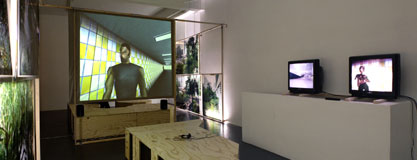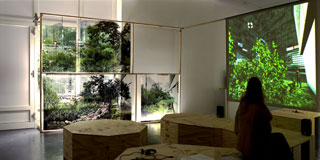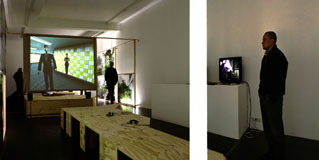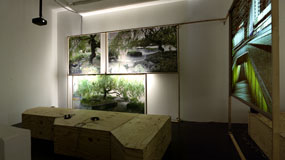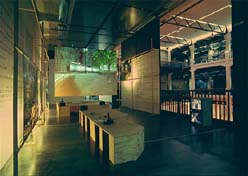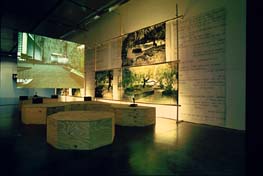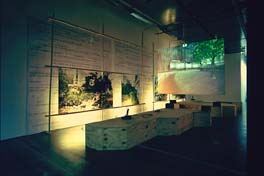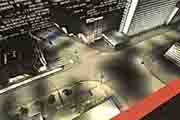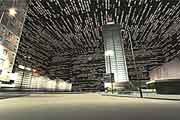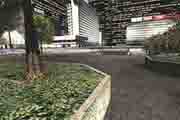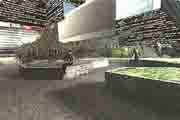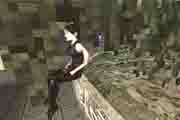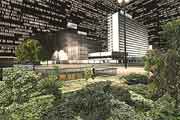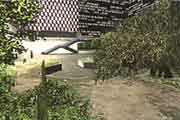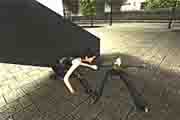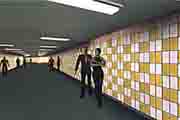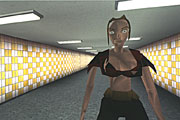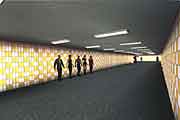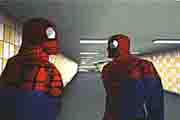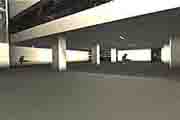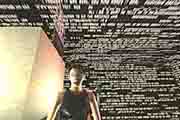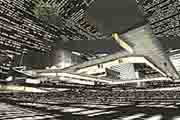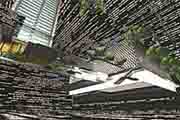München, November 2001
ZKM Karlsruhe, März 2002
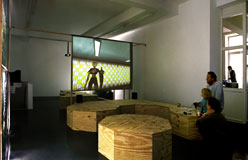
Installationsansicht Galerie Michael Zink
München 2001
Im Zentrum der Installation steht ein von Felix Stephan Huber entwickeltes, großflächig projiziertes Computerspiel, in dem der Besucher sich mittels eines virtuellen alter egos durch die Stadtlandschaft rund um den Alexanderplatz in Berlin bewegen kann. Über die Steuerungs-konsole bestimmt er direkt den Handlungsverlauf und aktiviert eingestreute Dialogsequenzen. „Nothing is real, it’s just there”, gibt eine Figur in einer dieser Szene zu bedenken und bringt damit die Verschiebung von Wirklichkeit in einer künstlich generierten und doch real erscheinenden Welt auf den Punkt. Das Spiel mit Realitätsmodellen setzt sich in der Installation fort: Der Besucher wird auf verschiedenen Ebenen mit immer dem gleichen Ort konfrontiert. Der Alexanderplatz in Berlin ist nicht nur Schauplatz des Computerspiels, er ist in dokumentarischen und inszenierten Videoprojektionen und Fotografien in der Ausstellung präsent und liefert die Vorlage für das zentrale Environment in der Galerie. Virtuelle Realität (ent)steht so bedeutungsgleich neben realer Virtualität, ein Bruch zwischen Inhalt und Medium ist nicht mehr erkennbar. Wie das aktuelle Interesse an der Cyberspace-Ikone Lara Croft zeigt, sind die Auswirkungen einer zunehmend virtualisierten Welt auf unsere tägliche Wirklichkeit inzwischen greifbar. Noch mag unser herkömmliches Verständnis von ”Identität” und ”Realität” davon nicht wirklich betroffen sein, aber Felix Stephan Huber sensibilisiert in seiner Arbeit für die kommenden Veränderungen und zeigt mögliche Verschiebungen seiner Koordinaten. Die Benutzeroberfläche seines Computerspiels wird so zum Austragungsort eines aktuellen Diskurses.
